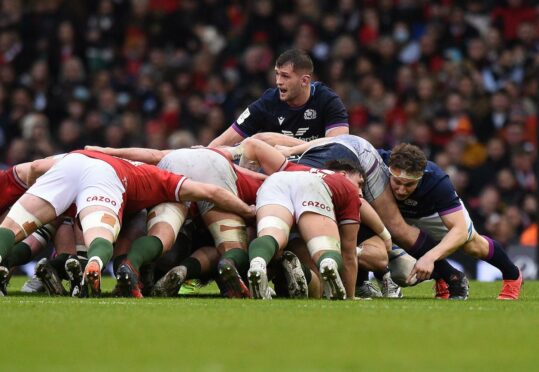The question is fast becoming: when does the level of circumstantial evidence on brain injury finally force a fundamental change in the game of rugby?
The study led by Dr Willie Stewart, consultant neuropathologist at the University of Glasgow – a member of World Rugby’s own Brain Health Initiative – of 412 Scotland male rugby internationalists released this week is incredibly bleak for those of us who love the game.
The study compared the rugby caps to 1200 non-players of the same age, location and socioeconomic status.
Risks now considerably greater than study period
It found the rugby players were twice as likely to get dementia, three times more likely to develop Parkinson’s disease. Most shockingly, they had 15 times the risk of developing Motor Neurone Disease (MND).
And as Dr Stewart points out, these were elite players in a different age. The game now is far faster, players much better conditioned and the instances of high-intensity contact considerably greater in number and severity.
“The way the game has changed professionally, with much more training and game exposure, has meant head injury rates and head impact rates have gone up,” he said.
“In 20 years time, if we repeat the study, we may see something which is even more concerning.”
Quite. But already we see the message of this study getting blurred. It’s a “small sample size”, there’s no definitive “causal link” – yet – between rugby and brain injury, we’re assured. More analysis and more studies are needed.
When do we face up to this crisis?
Exactly when do we in rugby finally face up properly to this crisis?
I believe loyalty and love of the sport (which I share) has – sometimes intentionally, most often not – obfuscated the response of rugby to the concussion and brain injury issue.
The protocols designed to protect players from head injury in rugby (and other sports, the NFL and football have their own similar issues) don’t work.
For example, Scottish Rugby has been vocal and proactive about concussion. They prioritised and promoted measures such as Head Injury Assessments at an early stage. The various protocols have been followed closely as they’ve changed over time.
SR has been particularly active in supporting the “If in doubt, sit them out” campaign promoted by the family of Ben Robinson, a young Northern Irish player who died from a severe concussion injury.
The Cattigan tragedy asks serious questions of Murrayfield
The harrowing story of Siobhan Cattigan leaves many questions to be answered ➡️ https://t.co/08wcPDh9BB pic.twitter.com/V5w7fg1T7a
— Rugby World (@Rugbyworldmag) August 1, 2022
But the death last year of Scotland international Siobhan Cattigan was a massive blow to Murrayfield’s entire programme.
Again, there’s as yet no definitive causal link between Siobhan’s tragic death and concussion – but it’s absolutely clear from the evidence of her loved ones that it was a major contributory factor.
I absolutely believe that Murrayfield is thorough and sincere in their practices, and follow the protocols rigorously. But even if Siobhan’s was an isolated case – and we don’t know if it is – one single tragedy brings every element of the process into question.
On a wider scale, rugby’s concussion response is failing. The game’s adjusted laws aimed at combating concussion are inadequate, as instances continue pretty much unabated.
Yet even these laws are being repeatedly challenged by member unions. Often it seems ways around protocols to ensure player availability are more important than safety.
Players are still coached to hit high, even at the risk of instant dismissal. Prominent players at the very highest level are returning to action a matter of days after they have failed Head Injury Assessments.
It’s only quite recently that players with head injuries have been summarily removed from games. Some very high profile coaches were loathe to even do that.
World Rugby’s response misses the point
The game is spending money – $10m from World Rugby – to study concussion. But even there, it’s largely from the standpoint to prove this is a rare and acceptable risk. The game is likely connected to some brain injuries, but it doesn’t happen to everyone.
This is surely a diversion from the point. Rather than make the game safer for everyone, we’re hoping – and really it’s just a hope – to identify the people for whom rugby might be a dangerous pastime. And probably exclude them, for their own safety.
Meanwhile parents across the world look at this preoccupation – some might say obsession – with physicality and ‘brutality’ in rugby. And they’ll quite understandably direct their kids’ activities elsewhere.
The question now should be: Is the intensive, high-impact part of the game really so essential to rugby’s culture? Could we not remove the dangerous elements easily enough?
Rather than fumbling in the dark for some definitive causal link the present evidence suggests is there anyway, would it not be better and universally simpler to do so?
